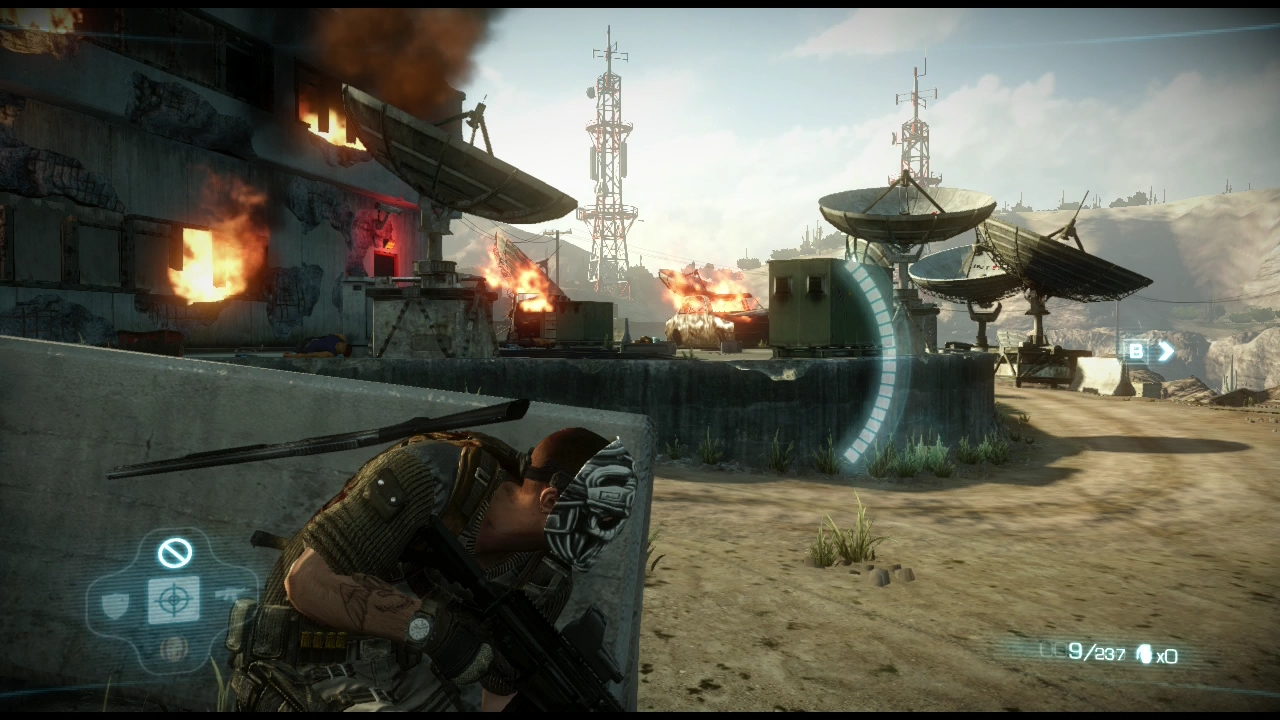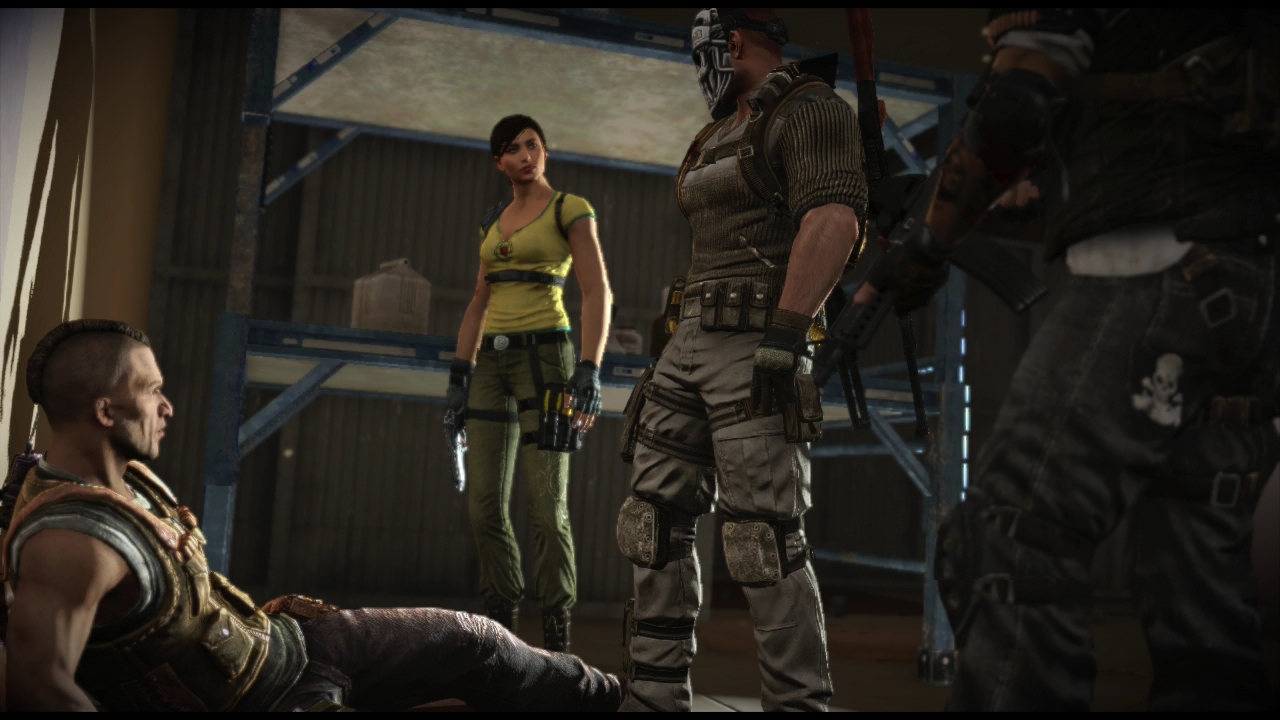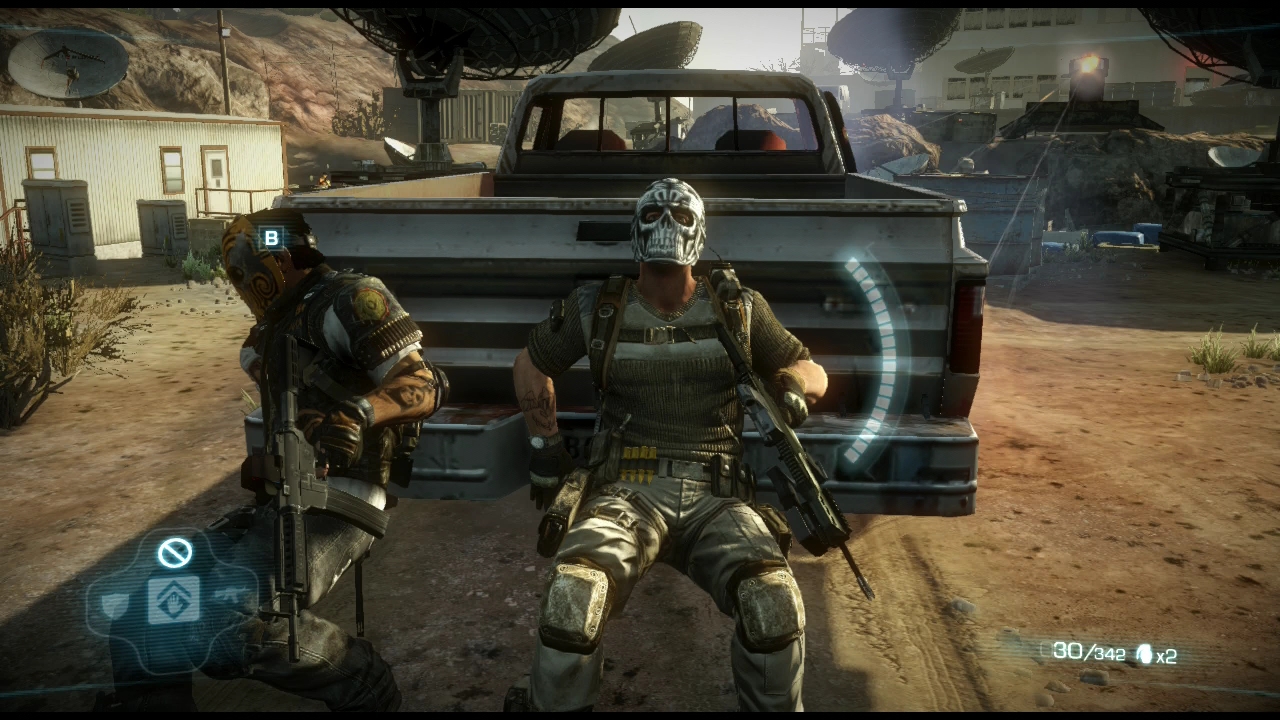Army of Two: The Devil's Cartel is a mostly competent, wholly soulless consumer product, the kind that might briefly satisfy your craving for action because it's new, if not particularly special or memorable. The third Army of Two game usually functions just fine, and its decent third-person shooting might even be enough to keep you gunning down one nameless grunt after another until there are no more grunts to gun down. But any spark the series has shown has been stripped away in favor of homogeneity. Like its two new protagonists, The Devil's Cartel blends into the background, unrecognizable among all the brown shooters that have come before it.
Those two heroes are Alpha and Bravo, whose function is to make the stars of the previous two games seem spectacular by comparison; even their very monikers give off the generic vibe the rest of the game so curiously exudes. If you're a returning fan, don't fear, for Salem and Rios have parts to play, and provide the only glimmers of energy in a story otherwise lacking in momentum and wit. For the majority of the game, the story can be summed up thusly: the titular drug cartel is bad, and so you must shoot up every cookie-cutter mercenary that stands between you and their bossman. The narrative lobs a few surprises at you near its conclusion, but the effect is akin to dropping a bomb on a desert; there's lots of noise and fire, but ultimately, the landscape hasn't changed much.
The path winding toward that bomb has Alpha and Bravo making their way through the usual places you visit when dealing with gaming's many drug cartels: dusty brown streets littered with cars that exist purely to catch on fire, weathered Mexican villages with graffiti scrawled across the walls, scrap yards loaded with rust-coated bins and barrels, and so forth. The two stop here and there to remind you of their mild "bro"ness by accusing each other of being gay, or grunting some nondescript action game dialogue, like "Watch out for ambushes!" For better or for worse, Army of Two: The Devil's Cartel lets the action do most of the talking.

If only it had something more interesting to say. Like its predecessors, The Devil's Cartel is a cooperative experience; either another player or the mediocre AI joins you in your mission of blandness. The cover system has been tweaked for the sake of mobility, allowing you to press a single button to slip into cover spots some distance away. At most times, speeding from one cover spot to another works well enough, making it fun to slide from one safe haven to another. At other times, certain surfaces won't allow you to take cover, or your slick moves could go awry when you go accidentally charging into the wrong side of a wall and leave your back turned to a legion of cartel mercs.
Regardless, the tempo of battle remains remarkably even throughout: take cover, fire at dudes until they fall down, and repeat the process. The shooting is functional but toothless; enemy death animations and lackluster weapon noises muffle the oomph necessary to pull The Devil's Cartel into the realm of power fantasy. Enemies scurry into the levels in predictable ways, and you mow them down, or you shoot the copious red barrels scattered about the battle arenas and watch them explode, taking all these copy/paste gunners with them. Even on hard difficulty, triumphing in battle isn't particularly challenging, and on medium, you may not even see the need to take cover much of the time.

To the game's benefit, several levels deviate from the corridor-shooting norm, opening up the environments and thus allowing the action to ebb and flow in sensible ways. It's nice to have room to maneuver, particularly when enemies approach from multiple angles, which is, sadly, not so common. It's too bad that mediocre enemy AI causes the game to so often fall on the "ebb" side of the coin, with soldiers sometimes failing to recognize your presence, or running right past your exposed buddy because they're so intent on stabbing you.
Like any given modern-day shooter, The Devil's Cartel fights repetition with occasional set piece sequences, putting you in charge of a helicopter's mounted guns, or behind the wheel of a coasting vehicle. The game ultimately loses this battle against monotony, though such set pieces provide the best moments, letting you momentarily revel in vehicular explosions and enjoy tearing apart the destructible environments that contain you. In many of these moments, you and your partner split up, one of you driving and the other gunning, for instance, or perhaps one of you charging through a small army while the other showers death from the sky. But for the most part, the game handles cooperative play in the most unimaginative way possible: by putting two people in the same place and having them kill stuff.
That's a disappointing direction for a series that has previously forced players to work together in clever ways. The aggro system has been downplayed to the point where it's not clear if a weapon's aggro statistic even matters, so no one needs to draw the ire of a dastardly fiend while the other winds behind and takes potshots. One of you can grab a riot shield, and the two of you can slowly push forward as a single unit, but The 40th Day's memorable back-to-back shooting sequences have been abandoned. The moral choices of that game have been dropped, too, and while The Devil's Cartel retains a weapon upgrade system, it lacks the personality of the systems that came before.
What a shame, too: blinging out your weapon in the last Army of Two game was a cheeky, self-aware delight. There are no more soda-can muzzles, screwdriver suppressors, or diamond-studded grenades--just the usual shrug-worthy scopes, suppressors, and so forth. You earn money for such enhancements by killing, which is to say, you needn't pay too much attention to this system in battle, given that you rake in enough dough to keep your gear effective. But if you prefer to exploit the economy and earn more money per kill, you can try for more melee backstabs (always a gory delight, thanks to some dramatic animations), flank your foes before shooting them, or fit in more headshots. Yet given the game's ease of play, you won't likely feel pressed to strive for maximum financial gain. In a game this simple, such an extravagant triumph rings hollow.

The other reward you reap for the act of playing the game is overkill. Gun down enough cartel goons, and you fill the overkill meter, which in turn allows you to go into a frenzy, temporarily filling everyone in sight with lead without fear of death or running out of ammo. Both players can activate overkill together, which leads to a slow-motion death spree, allowing you to again appreciate the destructible environments, with concrete chips flying about and entire cover opportunities being torn down. Such destruction is unfortunately the only way in which the otherwise dated-looking Army of Two: The Devil's Cartel visually stands out.
Given the game's cooperative nature, it's best to bring a friend along with you, not that you'll find that having a human partner is vital, since working together is usually unnecessary in a game that interprets "cooperative" as "sometimes you breach doors together in slow motion." But at least with another player you can avoid the AI's infrequent but annoying tendency to not properly follow the script and thus break the mission. Should you play on your own, expect one or two checkpoint reloads when your computer-controlled partner decides to hang around a pillar rather than move to the next destination. There's a downside to having a buddy join you, however: the third iteration of a series focused on two-player co-op doesn't support drop-in, drop-out play. If you want to invite someone else, you have to abandon your progress and start at the beginning of the chapter.
Previous Army of Two games stood apart in their own ways, not always excelling, but still willing to hew their own paths. Engaging the opposition in a Shanghai zoo, escaping across a collapsed skyscraper, saving civilians from menacing threats--these are small but meaningful moments that might be etched on your psyche from the series' past. There's nothing here to make a mark: no creativity on display, no clever competitive modes, no sense of accomplishment. There's only a seven-hour campaign, optional missions in which you try to keep the overkill meter consistently replenished, and the knowledge that in a month, you won't remember having played Army of Two: The Devil's Cartel.
